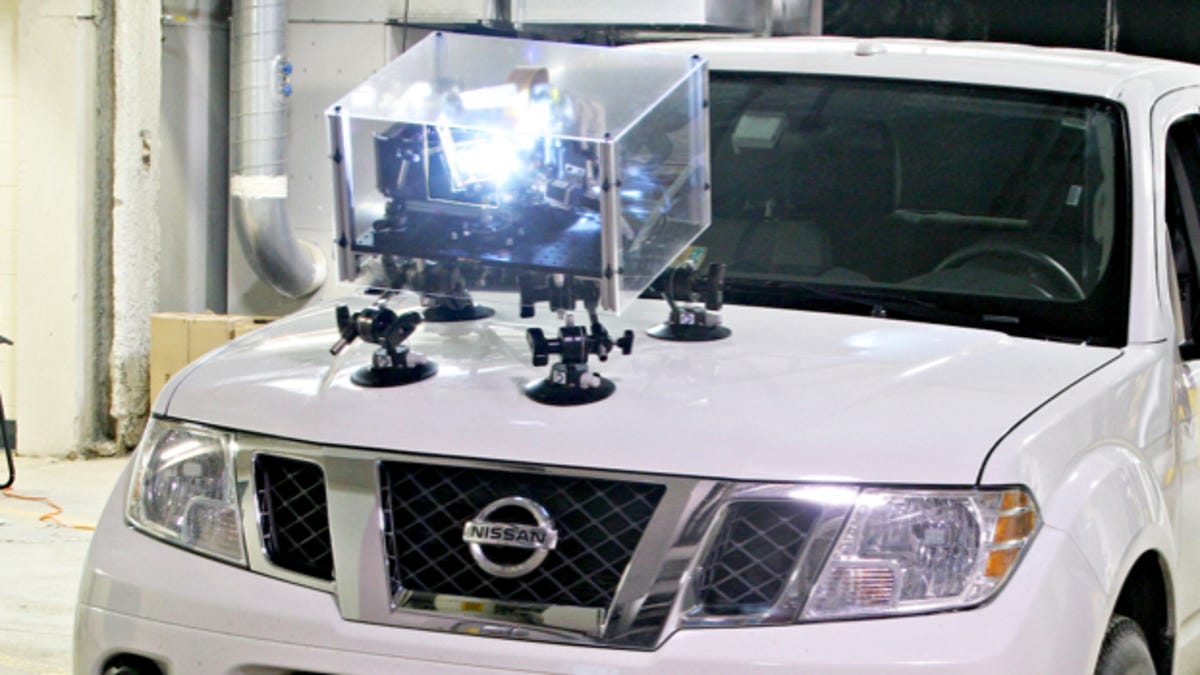Smart high-beam headlights won't blind oncoming drivers
Researchers at Carnegie Mellon created an experimental headlight that tracks other vehicles and blanks out the bits of light that would normally blind them in traffic.

High-beams are the bane of nighttime driving. You're just toodling along, minding your own business, when you round a corner and get an eyeful of bright light. This can turn a normal driving situation into a dangerous one in a split second, even if the other driver is thoughtful enough to turn the lights down. Researchers at Carnegie Mellon are developing a smart headlight system that takes slow human reaction times out of the equation.
The Carnegie Mellon team cannibalized and repurposed a DLP projector for the project. This allows for minute control over the light coming out. The researchers were able to divide the light into a million minuscule beams, and then dim or brighten the tiny sections as needed.
The result is a programmable headlight system that uses a camera to track other drivers on the road and then blacks out the specific parts of the headlight beam that would normally shine into their eyes. A driver with this sort of headlight doesn't have to keep one hand on the high-beam switch to turn it off for traffic; the headlight system handles all the hard work.
The system is also designed to work during snow or rain. It uses the same tracking principle and blocks out the light that would normally reflect off snowflakes or raindrops right in front of the headlights. This makes for less glare for the driver during bad weather conditions. The researchers are still working on improving the accuracy of this part of the system at high speeds, though it works well at low speeds.
A test version of the system was mounted to the front of a truck and tested on the streets of Pittsburgh. The driver of the car with the smart headlights will notice almost no change in the illumination in front of the vehicle. There is only a 3 to 5 percent reduction in light when the headlights adjust.
"Even after 130 years of headlight development, more than half of vehicle crashes and deaths occur at night, despite the fact there is much less traffic then. With our programmable system, however, we can actually make headlights that are even brighter than today's without causing distractions for other drivers on the road," says Srinivasa Narasimhan, associate professor of robotics.
The next step is for the researchers to modify the system to fit into the headlight compartment on a truck, so it can be tested in the same place regular headlights go. Someday, cursing at drivers with slow high-beam reactions could become a thing of the past, making for safer roads for everyone.

